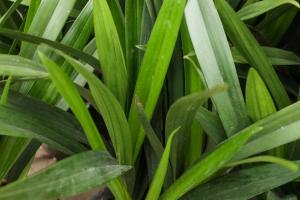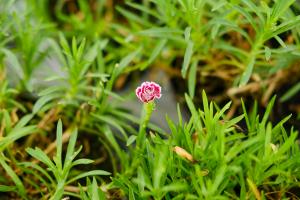When to Start Tomato Seeds for Big Plants in Zone 5
If you live in Zone 5 and want to have big, healthy tomato plants, you need to start thinking about when to start your seeds. This is a crucial step in the process, as it will determine how strong your plants are when they are ready to be planted outdoors.
Understanding Your Climate Zone
The first step in determining when to start your tomato seeds is to understand your climate zone. Zone 5 is characterized by cold winters and warm summers, and the growing season typically begins in mid to late May. This means that you need to plan carefully to ensure that your plants are strong and healthy when it's time to plant them outdoors.
Choosing the Right Variety
Another important factor in determining when to start your tomato seeds is choosing the right variety. Some tomato varieties are better suited for cooler climates, while others thrive in warmer conditions. If you're growing tomatoes in Zone 5, look for varieties that are known for their hardiness and disease resistance, such as Beefsteak or Celebrity.
Calculating the Ideal Start Time
Once you've identified the right variety, the next step is to calculate the ideal start time for your tomato seeds. In Zone 5, most gardeners start their tomato seeds indoors 6-8 weeks before the last frost date. This gives the plants enough time to grow strong and healthy before they are transplanted outdoors.
To calculate your ideal start time, look up your area's average last frost date and count backwards 6-8 weeks. For example, if your area's average last frost date is May 15th, you'll want to start your seeds indoors around late March to early April.
Preparing Your Materials
Before you start your seeds, it's important to make sure you have all the necessary materials. You'll need seed trays, potting soil, seed starting mix, and seedling heat mats. You may also want to invest in a grow light, especially if you don't have a sunny windowsill.
Starting Your Seeds
When it's time to start your seeds, fill your seed trays with potting soil and seed starting mix. Place one to two seeds in each cell, cover them with soil, and water gently. Place your seed trays on a seedling heat mat and keep the soil moist but not waterlogged. Once your seeds have germinated, remove any weaker seedlings and keep the strongest ones.
Caring for Your Seedlings
As your seedlings grow, they'll need plenty of light and water to stay healthy. If you're using a grow light, make sure it's set up at the right distance from your plants to prevent burning. Water your seedlings gently, being careful not to overwater or underwater. Once your seedlings have developed their true leaves, you can start fertilizing them with a balanced fertilizer.
Transplanting Your Tomato Plants
Once your plants have grown to about 6-8 inches tall and the weather has warmed up, it's time to transplant them outdoors. Before transplanting, harden off your plants by gradually exposing them to outdoor conditions over a period of a week. This will help them adjust to the new environment and reduce the risk of shock.
When transplanting, make sure to plant your tomato plants deep, burying the stem up to the first set of leaves. This will encourage strong root growth and help your plants become more established. Water your plants gently but thoroughly, and provide support for them with stakes or cages.
Conclusion
Starting tomato seeds for big plants in Zone 5 requires careful planning, but it's well worth the effort. With the right variety, timing, and care, you can grow healthy, productive tomato plants that will provide you with an abundant harvest all season long.

 how many times do yo...
how many times do yo... how many planted tre...
how many planted tre... how many pine trees ...
how many pine trees ... how many pecan trees...
how many pecan trees... how many plants comp...
how many plants comp... how many plants can ...
how many plants can ... how many plants and ...
how many plants and ... how many pepper plan...
how many pepper plan...






























